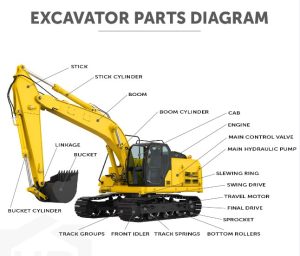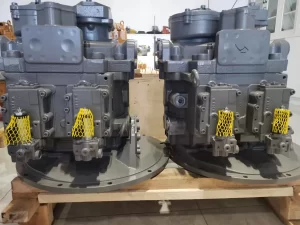
An excavator consists of several key components, including:
1.Boom: The boom is the long, horizontal arm that extends from the excavator's body. It provides reach and lifting capability to the machine.
2.Stick (also known as the dipper arm or arm): The stick is attached to the end of the boom and allows for digging and reaching into the excavation area.
3.Bucket: The bucket is attached to the end of the stick and is used for scooping, digging, and moving materials. There are various types of buckets available for different excavation purposes.
4.Cab: The cab is the enclosed operator compartment where the operator sits and controls the excavator's movements. It typically includes controls, instrumentation, and a seat for the operator.
5.Tracks: Excavators are equipped with tracks instead of wheels for stability and mobility. The tracks allow the machine to move and operate on various terrains.
6.Counterweight: The counterweight is located at the rear of the excavator and serves to balance the weight of the machine during operation. It helps prevent tipping and provides stability.
7.Hydraulic system: Excavators rely on a hydraulic system to power their movements. The hydraulic system controls the boom, stick, and bucket, allowing for precise and powerful digging and lifting capabilities.
8.Engine: The engine provides the power necessary for the excavator's operation. It drives the hydraulic system and other components of the machine.

These are the main components of an excavator, but there may be additional attachments and features depending on the specific model and purpose of the machine.


